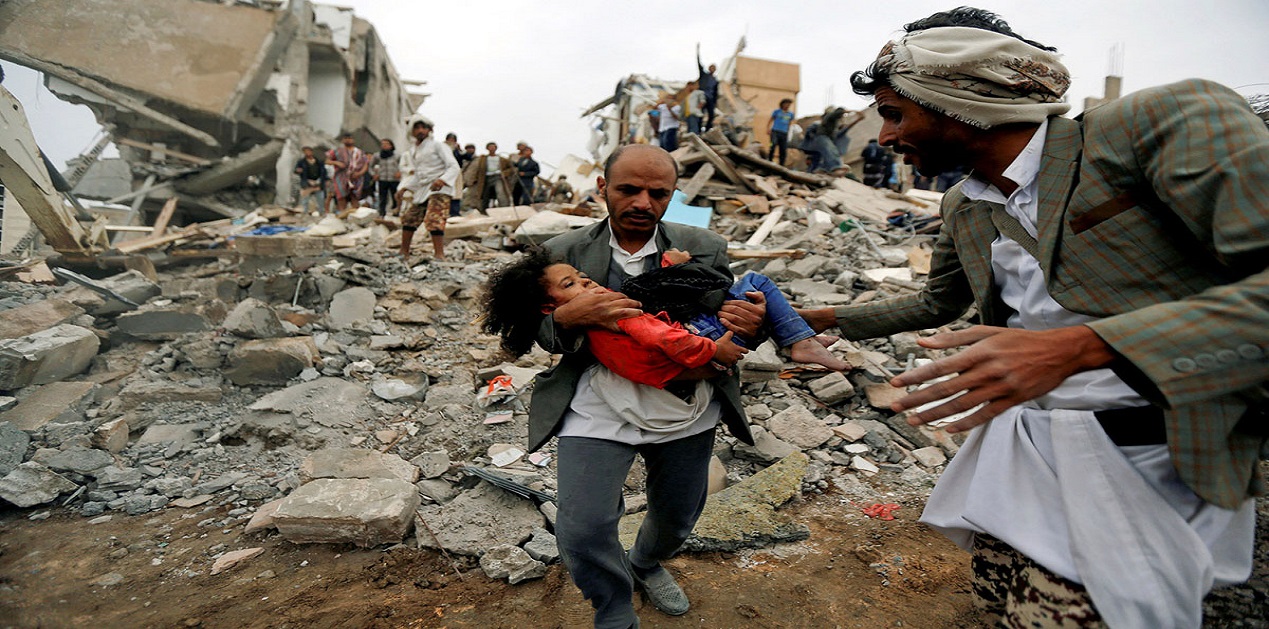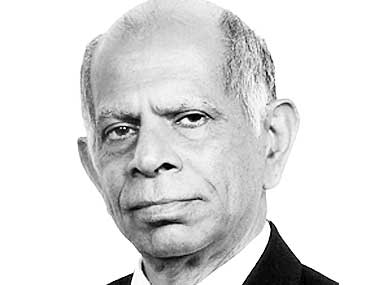Saudi Arabia invaded its neighbour Yemen in March 2015. The assessment then in Riyadh was that after a few weeks of aerial bombing, the Houthis will surrender and Hadi, the President who escaped to Riyadh from imprisonment at his residence by the Houthis, would go back triumphantly to Saana and resume his office. Accordingly, the military operation was named Operation Decisive Storm (ODS).
Four years and about 100,000 deaths later, it is painfully clear that ODS, later renamed as Operation Renewal of Hope, has been far from decisive. It has not restored Hadi to office. It has only produced ‘the worst humanitarian situation’ as the United Nations has put it.
Origins of This War
Yemen was united only in 1990 when North Yemen and South Yemen got united. Even after unification, we cannot say that Yemen emerged as a nation-state as the tribal loyalties remained strong.
President Ali Abdullah Saleh, in power since 1990, thanks to rigged elections, refused to leave power even as more and more people took to the streets starting from February 2011 as the Arab Spring dawned. Finally, he left office with much reluctance and his deputy Hadi became President for a two-year term starting in 2012. A U.N. brokered National Dialogue Conference reached agreement on reforms. However, Hadi turned out to be a poor navigator in the tricky Yemeni political waters and he alienated the Houthis, a powerful Shia group that had carried out an armed revolt for years when Saleh was in power. The Houthis got support from Saleh who retained much clout with the military and the bureaucracy even after leaving office.
Yemen’s economy was crumbling. By December 2014, the Houthis started taking over government institutions including the Central Bank. Next month, Hadi was confined to his residence. He escaped and reached Riyadh in March 2015. After his meeting with Prince Mohammed bin Salman (PMS) on 25th March the ODS was announced the same day. PMS was then Deputy Crown Prince and Defence Minister.

Riyadh listed the following as allies in ODS: U.A.E., Qatar, Bahrain, Kuwait, Egypt, Jordan, Morocco, Pakistan, and Sudan. Pakistan declined to send ground troops. We may note that Oman had declined to be part of ODS. Oman has always followed an independent foreign policy. The allies not listed by Riyadh are more important than the ones listed: United States, United Kingdom, France, Germany, Spain, and the Netherlands. Without their arms and technical-cum-intelligence support, Riyadh could not have carried out the ODS. However, it should be noted that the ODS has been a resounding failure as the map above shows. The map is reasonably accurate, but it does nor show patches of territory held by the Islamic State. But it is clear that the Saudi-supported Hadi has hardly any chance of restoration in the near future.
Recent Developments
We need to look at three developments. First, the frequency of attacks on Saudi Arabia by the Houthis using drones and ballistic missiles has increased recently. The air defense system of the Saudis including the U.S. supplied Patriot system has not always been able to prevent the attacks. The Houthis did take over the Scud B and C missiles that the Yemeni army had acquired when Saleh was in power. Additionally, the Houthis now have North Korean missiles (Hwasong and Tochka) and drones with a range of 1,000 km. There is speculation that Russia, Iran, or Hezbollah might have sent parts to be assembled. Saudi oil pipelines too have been targeted. In short, it is no longer a one-way attack with the Houthis resorting to offensive actions against Saudi Arabia.
Second, there is growing pressure on the governments in the West to stop selling arms to Saudi Arabia and U.A.E. The U.S. Congress passed a resolution to stop arms shipments to Saudi Arabia, following the atrocious murder of journalist Khashoggi in the Saudi Consulate General in Istanbul (2nd October 2018) and reports of Saudi bombing of schools, hospitals, marriages and even funerals in Yemen. President Trump rejected the resolution and the Congress has not been able to send it back to the President with a 2/3rds majority overruling his rejection. In the U.K. the Court of Appeals has ordered the government to stop shipment of arms, but the government has not yet complied. It has approached a higher court for a review. Germany announced in October 2018 its decision not to sign any new contract. Spain announced a stop but went back on it. In short, Riyadh cannot be certain that the arms supply from the West will be uninterrupted.
Third, the U.A.E. the most enthusiastic ally of Saudi Arabia, is having second thoughts about the ODS. It has withdrawn its forces from many parts of Yemen, but not all. It has retained its military presence in the port of Mukalla.
Does the U.A.E. withdrawal signal a difference in approach to Yemen between Abu Dhabi and Riyadh? Obviously, the withdrawal weakens Saudi Arabia’s military and diplomatic position. It is equally obvious that the two allies would have discussed the matter and that the two would have agreed to treat this matter in amanner that does not project a rift in the alliance. In this context, we should take note of U.A.E.s talks with Iran on 30th July on ‘border security and navigation in shared waters’ as the U.A.E. put it. The last such talks were held in 2013. Obviously, the U.A.E. is not in tune with President Trump’s policy of “maximum pressure” on Iran. We do not know whether Abu Dhabi held the talks with the prior concurrence of Riyadh.
All told, it is difficult not to conclude that the U.A.E. does want to de-escalate the crisis in the Gulf and wants to reach out to Iran diplomatically. Hence, it and Saudi Arabia are no longer on the same wavelength right now.
The Grim Humanitarian Situation
Neither Saudi-led coalition nor the Houthis have complied with the Geneva Conventions on war. The former has been more guilty than the latter, having deliberately bombed schools, wedding and funeral gatherings, not to speak of essential utilities such as water and power. The Security Council has failed to demand that the Riyadh abide by international law. The toll on the civilians has been atrociously high. In a report put out on 25th March 2019, marking the fourth anniversary of the beginning of this atrocious war, the U.N. says that 85,000 children have died. About 24 million human beings, accounting for 80% of the Yemeni population, need humanitarian assistance, with 3.3 million displaced. According to the NGO CARE, there are about 1.1 million malnourished women, pregnant or breast-feeding. More than 3.25 million women are facing serious health risks.
Possible Scenarios
One scenario is that PMS himself is looking for a face-saving formula and the U.A.E. moves have his approval. The Houthis might give him one through the Stockholm talks brokered by U.N. in which case we are about to witness the beginning of the end of this unnecessary war.
The other scenario is that PMS might choose to stay the course, and the West will not stop making money by selling arms. In such a scenario a cease-fire might be possible only after a policy change in Riyadh, with or without a change in leadership.
Image Source: https://cdn.theatlantic.com/assets/media/img/photo/2017/12/more-than-a-thousand-days-of-war-in/y01_RTX3DFG0/main_1200.jpg?1514490987











Post new comment